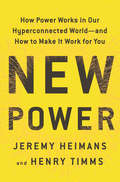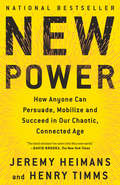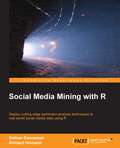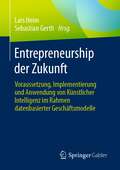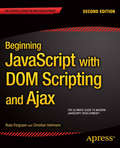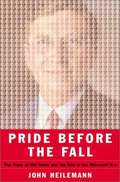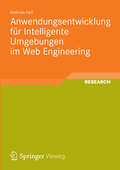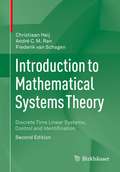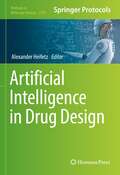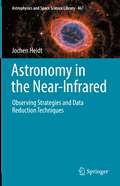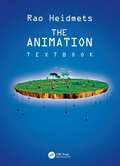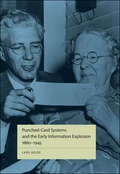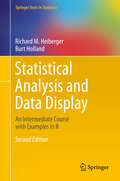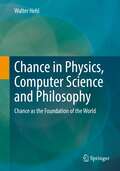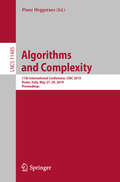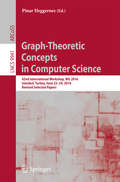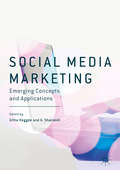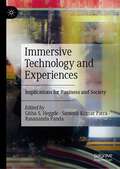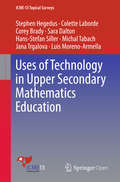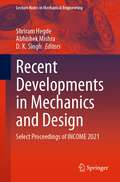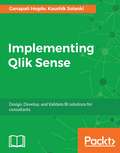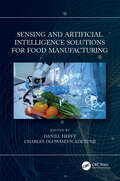- Table View
- List View
New Power: How Power Works in Our Hyperconnected World--and How to Make It Work for You
by Jeremy Heimans Henry TimmsFrom two influential and visionary thinkers comes a big idea that is changing the way movements catch fire and ideas spread in our highly connected world.For the vast majority of human history, power has been held by the few. "Old power" is closed, inaccessible, and leader-driven. Once gained, it is jealously guarded, and the powerful spend it carefully, like currency. But the technological revolution of the past two decades has made possible a new form of power, one that operates differently, like a current. "New power" is made by many; it is open, participatory, often leaderless, and peer-driven. Like water or electricity, it is most forceful when it surges. The goal with new power is not to hoard it, but to channel it. New power is behind the rise of participatory communities like Facebook and YouTube, sharing services like Uber and Airbnb, and rapid-fire social movements like Brexit and #BlackLivesMatter. It explains the unlikely success of Barack Obama's 2008 campaign and the unlikelier victory of Donald Trump in 2016. And it gives ISIS its power to propagate its brand and distribute its violence. Even old power institutions like the Papacy, NASA, and LEGO have tapped into the strength of the crowd to stage improbable reinventions. In New Power, the business leaders/social visionaries Jeremy Heimans and Henry Timms provide the tools for using new power to successfully spread an idea or lead a movement in the twenty-first century. Drawing on examples from business, politics, and social justice, they explain the new world we live in--a world where connectivity has made change shocking and swift and a world in which everyone expects to participate.
New Power: How Power Works in Our Hyperconnected World--and How to Make It Work for You
by Jeremy Heimans Henry TimmsIn this indispensable guide to navigating the twenty-first century, two visionary thinkers reveal the unexpected ways power is changing--and how "new power" is reshaping politics, business, and life.Why do some leap ahead while others fall behind in our chaotic, connected age? In New Power, Jeremy Heimans and Henry Timms confront the biggest stories of our time--the rise of mega-platforms like Facebook and Uber; the out-of-nowhere victories of Obama and Trump; the unexpected emergence of movements like #MeToo--and reveal what's really behind them: the rise of "new power."For most of human history, the rules of power were clear: power was something to be seized and then jealously guarded. This "old power" was out of reach for the vast majority of people. But our ubiquitous connectivity makes possible a different kind of power. "New power" is made by many. It is open, participatory, and peer-driven. It works like a current, not a currency--and it is most forceful when it surges. The battle between old and new power is determining who governs us, how we work, and even how we think and feel. New Power shines fresh light on the cultural phenomena of our day, from #BlackLivesMatter to the Ice Bucket Challenge to Airbnb, uncovering the new power forces that made them huge. Drawing on examples from business, activism, and pop culture, as well as the study of organizations like Lego, NASA, Reddit, and TED, Heimans and Timms explain how to build new power and channel it successfully. They also explore the dark side of these forces: the way ISIS has co-opted new power to monstrous ends, and the rise of the alt-right's "intensity machine."In an era increasingly shaped by new power, this groundbreaking book offers us a new way to understand the world--and our role in it.
Social Media Mining with R
by Richard Heimann Nathan DannemanA concise, hands-on guide with many practical examples and a detailed treatise on inference and social science research that will help you in mining data in the real world. Whether you are an undergraduate who wishes to get hands-on experience working with social data from the Web, a practitioner wishing to expand your competencies and learn unsupervised sentiment analysis, or you are simply interested in social data analysis, this book will prove to be an essential asset. No previous experience with R or statistics is required, though having knowledge of both will enrich your experience.
Entrepreneurship der Zukunft: Voraussetzung, Implementierung und Anwendung von Künstlicher Intelligenz im Rahmen datenbasierter Geschäftsmodelle
by Lars Heim Sebastian GerthDieses Buch behandelt die Rolle von Künstlicher Intelligenz (KI) im Kontext der fortlaufenden Digitalisierung und Automatisierung in Unternehmen, um Wertschöpfung zu optimieren, neue Geschäftsmodelle zu entwickeln oder bestehende zu transformieren. Untersucht werden Voraussetzungen, Implementierung und Anwendung von KI in datenbasierten Geschäftsmodellen und dabei sowohl Chancen als auch Risiken beleuchtet.Der erste Buchabschnitt konzentriert sich auf die erforderlichen Bedingungen für den erfolgreichen Einsatz von KI. Hierzu zählen die Erfassung und Verarbeitung von Daten, der Aufbau einer robusten IT-Infrastruktur und die Personalschulung. Im zweiten Abschnitt wird die Implementierung von KI diskutiert. Besonderer Fokus liegt dabei auf dem Aufbau und Training von KI-Systemen und deren Integration in bestehende Geschäftsprozesse. Verschiedene Ansätze der KI, wie Machine Learning und Deep Learning, werden erläutert und ihre Anwendungsmöglichkeiten aufgezeigt. Der dritte Abschnitt widmet sich der praktischen Anwendung von KI in verschiedenen Branchen und Geschäftsmodellen. So werden etwa Beispiele aus der Produktion, dem Handel und der Dienstleistungsbranche vorgestellt, um den Einsatz von KI zur Automatisierung von Prozessen, Optimierung von Entscheidungen und Verbesserung von Prognosen zu demonstrieren.Insgesamt bietet das Buch eine umfassende Perspektive auf das Thema KI und liefert in 17 Kapiteln wertvolle Anregungen für Unternehmen, um ihre Zukunftsfähigkeit mit KI zu sichern und von den Möglichkeiten zu profitieren. Die Beiträge von führenden Expert:innen aus unterschiedlichen Disziplinen, mit verschiedenen theoretischen Ansätzen, methodischen Zugängen und empirischen Befunden beleuchten und diskutieren das Thema sehr anschaulich.
Beginning JavaScript with DOM Scripting and Ajax: Second Editon (Beginning: From Novice To Professional Ser.)
by Christian Heilmann Russ FergusonBeginning JavaScript with DOM Scripting and Ajax is an essential resource for modern JavaScript programming. This completely updated second edition covers everything you need to know to get up-to-speed with JavaScript development and add dynamic enhancements to web pages, right from the basics. As well as focusing on client-side JavaScript, you will also learn how to work with the Browser Object Model, the Document Object Model (DOM), how to use XML and JSON as well as communicate with service side scripts such as PHP. Find out how to: Construct good JavaScript syntax following modern coding practices Use JavaScript to communicate with the server and retrieve data Dynamically manipulate markup, validate forms and deal with images Debug applications using features inside the browser JavaScript is one of the most important technologies on the web. It provides the means to add dynamic functionality to your web pages and serves as the backbone of Ajax-style web development. Beginning JavaScript with DOM Scripting and Ajax will take you from being a JavaScript novice to work freely with this important technology - begin your JavaScript journey today!
Pride before the fall
by John Heilemann"John Heilemann's Pride Before the Fall uncovers the secret history of the antitrust trial that shook an economy: United States v. Microsoft. Drawing on years of reporting - including extensive interviews with Gates and other top Microsoft executives, Justice Department trustbuster Joel Klein, superlitigator David Boies, Intel chief Andy Grove, Sun Microsystems CEO Scott McNealy, and scores of lesser-known but pivotal players - Heilemann lays bare the chaotic confluence of forces that shattered Microsoft's aura of invincibility and the climate of fear that held an industry in thrall. " "Based on an acclaimed Wired magazine cover story, Pride Before the Fall is packed with rich personalities, dramatic scenes, and explosive revelations. It tells the stories of the largely unknown men and women who turned their opposition to Gates's company into a crusade, laboring for years to persuade the government to indict Microsoft for its monopolistic practices. Pride Before the Fall explains in compelling detail how the high-tech kingpins whose businesses Gates had tried to destroy or strong-arm (Netscape, Apple, Sun, and even Intel) worked in secret to help the Justice Department bring down Microsoft. It explores the lasting damage the trial has inflicted on the first great empire of the Information Age. And Heilemann offers a vivid and sometimes shocking portrait of Gates himself - describing a man who in 1993 told his friends, "I have as much power as the president," only to be thrown into rage and depression a few years later, when he discovered just how wrong he'd been. "--BOOK JACKET. Title Summary field provided by Blackwell North America, Inc. All Rights Reserved
Pride Before the Fall: The Trials of Bill Gates and the End of the Microsoft Era
by John HeilemannPride Before the Fall is the definitive account of the trial that shook an economy: United States v. Microsoft. Award-winning journalist John Heilemann uncovers the explosive truth behind the headlines: how the high-tech kingpins Bill Gates had tried to destroy, together with a motley crew of anonymous crusaders, worked in secret to help the government take down the most powerful empire of the information age. As colorful and riveting as a detective novel, Pride Before the Fall is an unforgettable tale of human ambition and human frailty - a timely saga of arrogance, hubris, ruthlessness, and revenge.e
Anwendungsentwicklung für Intelligente Umgebungen im Web Engineering
by Andreas HeilAndreas Heil beschreibt den ganzheitlichen Ansatz zur Anwendungsentwicklung für komplexe Software-Systeme im Web Engineering. Basierend auf dem WebComposition-Vorgehensmodell betrachtet der Autor einen iterativen Entwicklungsprozess - insbesondere für intelligente Umgebungen und verteilte Systeme. Im Vordergrund steht dabei die effiziente und kostengünstige Integration von Hard- und Softwarekomponenten unter Zuhilfenahme von Web-Technologien und dem Semantic Web. Das formale Beschreibungsverfahren WebComposition-Concurrency-System ermöglicht hierbei die effiziente Planung und Überwachung sowohl der Entwicklung als auch des operativen Betriebs des Systems.
Introduction to Mathematical Systems Theory: Discrete Time Linear Systems, Control and Identification
by Christiaan Heij André C.M. Ran Frederik van SchagenThis book provides an introduction to the theory of linear systems and control for students in business mathematics, econometrics, computer science, and engineering. The focus is on discrete time systems, which are the most relevant in business applications, as opposed to continuous time systems, requiring less mathematical preliminaries. The subjects treated are among the central topics of deterministic linear system theory: controllability, observability, realization theory, stability and stabilization by feedback, LQ-optimal control theory. Kalman filtering and LQC-control of stochastic systems are also discussed, as are modeling, time series analysis and model specification, along with model validation.This second edition has been updated and slightly expanded. In addition, supplementary material containing the exercises is now available on the Springer Link's book website.
Artificial Intelligence in Drug Design (Methods in Molecular Biology #2390)
by Alexander HeifetzThis volume looks at applications of artificial intelligence (AI), machine learning (ML), and deep learning (DL) in drug design. The chapters in this book describe how AI/ML/DL approaches can be applied to accelerate and revolutionize traditional drug design approaches such as: structure- and ligand-based, augmented and multi-objective de novo drug design, SAR and big data analysis, prediction of binding/activity, ADMET, pharmacokinetics and drug-target residence time, precision medicine and selection of favorable chemical synthetic routes. How broadly are these approaches applied and where do they maximally impact productivity today and potentially in the near future. Written in the highly successful Methods in Molecular Biology series format, chapters include introductions to their respective topics, lists of the necessary software and tools, step-by-step, readily reproducible modeling protocols, and tips on troubleshooting and avoiding known pitfalls. Cutting-edge and unique, Artificial Intelligence in Drug Design is a valuable resource for structural and molecular biologists, computational and medicinal chemists, pharmacologists and drug designers.
Astronomy in the Near-Infrared - Observing Strategies and Data Reduction Techniques (Astrophysics and Space Science Library #467)
by Jochen HeidtNear-infrared astronomy has become one of the most rapidly developing branches in modern astrophysics. Innovative observing techniques, near-infrared detectors with quantum efficiencies in excess of 90%, highly specialised instruments as well as advanced data reduction techniques have allowed major breakthroughs in various areas like exoplanets, star-forming regions, the supermassive black hole in the Galactic center, and the high-redshift Universe. In this book, the reader will be introduced to the basic concepts of how to prepare near-infrared observations with maximized scientific return. Equal weight is given to all aspects of the data reduction for both - imaging and spectroscopy. Information is also provided on the state of the art instrumentation available and planned, on detector technology or the physics of the atmosphere, all of which influence the preparation and execution of observations and data reduction techniques. The beginner but also the expert will find a lot of information in compact form which is otherwise widely dispersed across the internet or other sources.
The Animation Textbook
by Rao HeidmetsThis introductory textbook provides practical exercises to help students and beginner animators get to grips with the basics of creating animated films. It covers both traditional 2D and 3D animated film, as well as experimental and computer animation. The first part of the book includes exercises colour-coded by difficult, to guide readers through the activities as they become more challenging. The second part of the book focuses on development, pre-production, production, and post-production to assist you with making your animated films feel more professional. The book also includes information and guidance on how to easily create animation using only a mobile phone. This book will be helpful to all students and newcomers looking to gain a grounding in the basics of animated film.
Punched-Card Systems and the Early Information Explosion, 1880–1945 (Studies in Industry and Society)
by Lars HeideAt a time when Internet use is closely tracked and social networking sites supply data for targeted advertising, Lars Heide presents the first academic study of the invention that fueled today’s information revolution: the punched card. Early punched cards helped to process the United States census in 1890. They soon proved useful in calculating invoices and issuing pay slips. As demand for more sophisticated systems and reading machines increased in both the United States and Europe, punched cards served ever-larger data-processing purposes. Insurance companies, public utilities, businesses, and governments all used them to keep detailed records of their customers, competitors, employees, citizens, and enemies. The United States used punched-card registers in the late 1930s to pay roughly 21 million Americans their Social Security pensions, Vichy France used similar technologies in an attempt to mobilize an army against the occupying German forces, and the Germans in 1941 developed several punched-card registers to make the war effort—and surveillance of minorities—more effective. Heide’s analysis of these three major punched-card systems, as well as the impact of the invention on Great Britain, illustrates how different cultures collected personal and financial data and how they adapted to new technologies.This comparative study will interest students and scholars from a wide range of disciplines, including the history of technology, computer science, business history, and management and organizational studies.
Statistical Analysis and Data Display
by Richard M. Heiberger Burt HollandThis contemporary presentation of statistical methods features extensive use of graphical displays for exploring data and for displaying the analysis. The authors demonstrate how to analyze data--showing code, graphics, and accompanying tabular listings--for all the methods they cover. They emphasize how to construct and interpret graphs. They discuss principles of graphical design. They identify situations where visual impressions from graphs may need confirmation from traditional tabular results. All chapters have exercises. The authors provide and discuss R functions for all the new graphical display formats. All graphs and tabular output in the book were constructed using these functions. Complete R scripts for all examples and figures are provided for readers to use as models for their own analyses. This book can serve as a standalone text for statistics majors at the master's level and for other quantitatively oriented disciplines at the doctoral level, and as a reference book for researchers. In-depth discussions of regression analysis, analysis of variance, and design of experiments are followed by introductions to analysis of discrete bivariate data, nonparametrics, logistic regression, and ARIMA time series modeling. The authors illustrate classical concepts and techniques with a variety of case studies using both newer graphical tools and traditional tabular displays. The Second Edition features graphs that are completely redrawn using the more powerful graphics infrastructure provided by R's lattice package. There are new sections in several of the chapters, revised sections in all chapters and several completely new appendices. New graphical material includes: * an expanded chapter on graphics * a section on graphing Likert Scale Data to build on the importance of rating scales in fields from population studies to psychometrics * a discussion on design of graphics that will work for readers with color-deficient vision * an expanded discussion on the design of multi-panel graphics * expanded and new sections in the discrete bivariate statistics capter on the use of mosaic plots for contingency tables including the n×2×2 tables for which the Mantel-Haenszel-Cochran test is appropriate * an interactive (using the shiny package) presentation of the graphics for the normal and t-tables that is introduced early and used in many chapters The new appendices include discussions of R, the HH package designed for R (the material in the HH package was distributed as a set of standalone functions with the First Edition of this book), the R Commander package, the RExcel system, the shiny package, and a minimal discussion on writing R packages. There is a new appendix on computational precision illustrating and explaining the FAQ (Frequently Asked Questions) about the differences between the familiar real number system and the less-familiar floating point system used in computers. The probability distributions appendix has been expanded to include more distributions (all the distributions in base R) and to include graphs of each. The editing appendix from the First Edition has been split into four expanded appendices--on working style, writing style, use of a powerful editor, and use of LaTeX for document preparation.
Security for Wireless Implantable Medical Devices
by Xiali Hei Xiaojiang DuIn the treatment of chronic diseases, wireless Implantable Medical Devices (IMDs) are commonly used to communicate with an outside programmer (reader). Such communication raises serious security concerns, such as the ability for hackers to gain access to a patient's medical records. This brief provides an overview of such attacks and the new security challenges, defenses, design issues, modeling and performance evaluation in wireless IMDs. While studying the vulnerabilities of IMDs and corresponding security defenses, the reader will also learn the methodologies and tools for designing security schemes, modeling, security analysis, and performance evaluation, thus keeping pace with quickly-evolving wireless security research.
Chance in Physics, Computer Science and Philosophy: Chance as the Foundation of the World (Die blaue Stunde der Informatik)
by Walter HehlChance is uncanny to us. We thought it didn't exist, that God or a reasonable explanation was behind everything. But we know today: It exists. We know that much of what surrounds us and which we do not see through, nevertheless runs causally. Unlike what was thought in the days of the Enlightenment, chance is the rule around us rather than lawful order. The clouds are stochastic fractals, the waves on the sea are pure random machinery. The philosopher Charles Peirce recognized the fundamental importance of chance in precisely this sense, even before quantum and chaos theory, and gave the doctrine its name: Tychism. Without chance there would be nothing new, no life, no creativity, no history. This book looks at chance from the perspective of physics, computer science, and philosophy. It spans from antiquity to quantum physics and shows that chance is firmly built into the world and that it would not exist without chance. This book is a translation of the original German 1st edition Der Zufall in Physik, Informatik und Philosophie by Walter Hehl, published by Springer Fachmedien Wiesbaden GmbH, part of Springer Nature in 2021. The translation was done with the help of artificial intelligence (machine translation by the service DeepL.com). A subsequent human revision was done primarily in terms of content, so that the book will read stylistically differently from a conventional translation. Springer Nature works continuously to further the development of tools for the production of books and on the related technologies to support the authors.
Der Zufall in Physik, Informatik und Philosophie: Zufall als Fundament der Welt (Die blaue Stunde der Informatik)
by Walter HehlDer Zufall ist uns unheimlich. Wir dachten, es gäbe ihn nicht, hinter allem stehe Gott oder eine vernünftige Erklärung. Aber wir wissen heute: Es gibt ihn. Wir wissen, dass vieles dessen, was uns umgibt und das wir nicht durchschauen, trotzdem kausal abläuft. Anders als zu Zeiten der Aufklärung gedacht, ist der Zufall um uns eher die Regel als die gesetzmäßige Ordnung. Die Wolken sind Fraktale, die Wellen auf dem Meer sind eine reine Zufallsmaschinerie. Der Philosoph Charles Peirce hat genau in diesem Sinn noch vor Quanten- und Chaostheorie die fundamentale Bedeutung des Zufalls erkannt und der Lehre ihren Namen gegeben: Tychismus.Ohne Zufall gäbe es nichts Neues, kein Leben, keine Kreativität, keine Geschichte.Dieses Buch betrachtet den Zufall aus Sicht der Physik, der Informatik und der Philosophie. Es spannt den Bogen von der Antike zur Quantenphysik und zeigt, dass der Zufall fest in die Welt eingebaut ist und es sie ohne Zufall nicht gäbe.
Algorithms and Complexity: 11th International Conference, CIAC 2019, Rome, Italy, May 27–29, 2019, Proceedings (Lecture Notes in Computer Science #11485)
by Pinar HeggernesThis book constitutes the refereed conference proceedings of the 11th International Conference on Algorithms and Complexity, CIAC 2019, held in Rome, Italy, in May 2019. The 30 full papers were carefully reviewed and selected from 95 submissions. The International Conference on Algorithms and Complexity is intended to provide a forum for researchers working in all aspects of computational complexity and the use, design, analysis and experimentation of efficient algorithms and data structures. The papers present original research in the theory and applications of algorithms and computational complexity.
Graph-Theoretic Concepts in Computer Science
by Pinar HeggernesThis book constitutes revised selected papers from the 42nd International Workshop on Graph-Theoretic Concepts in Computer Science, WG 2016, held in Istanbul, Turkey, in June 2016. The 25 papers presented in this volume were carefully reviewed and selected from 74 submissions. The WG conferences aim to connect theory and practice by demonstrating how graph-theoretic concepts can be applied to various areas of computer science and by extracting new graph problems from applications. Their goal is to present new research results and to identify and explore directions of future research.
Social Media Marketing
by Githa Heggde G. ShaineshThis book focuses on the role of social media as the next major game-changer. Social media has emerged as the defining trend in the last decade and continues to restructure communication and interactions between individuals, communities, governments and businesses. Researchers and marketers are still struggling with the profound impact of rapidly evolving social media on viral user-generated content, its ability to shape consumer perceptions, and the constantly changing landscape for developing business cases to proactively engage with stakeholders. The growing opportunities to “hear” about customer priorities and concerns on company managed channels as well as third-party review sites, including social media pages, across the digital space are accompanied by the challenges of responding to these conversations in real-time, which calls for a massive shift in the way marketing functions engage in dialogue with customers. As leading users of social media in emerging markets, Indians are increasingly logging into their Facebook and Twitter accounts, with the country recording the highest growth in social networking. This book begins by discussing the impact of social media on marketing, from brand building, communications, and advertising to customization and customer engagement. The book approaches the subject matter systematically, identifying broad trends, concepts and frameworks in the first few chapters. It then goes on to address the varied application of social media in marketing for different sectors. Primarily focusing on understanding digital consumers, the book integrates social media with marketing and the outcome. It also presents new, selected cases of successful digital companies in emerging markets never before considered. Researchers and managers alike will find this book to be a handy reference guide to social media in emerging markets.
Immersive Technology and Experiences: Implications for Business and Society
by Githa S. Heggde Santosh Kumar Patra Rasananda PandaThis book provides a comprehensive overview of the role of immersive technology with multiple sectoral perspectives, such as entertainment, education, health care, and more. It covers a detailed analysis of the latest trends and developments in the field. It encompasses practical insights on using immersive technology effectively through industry expert chapters, case studies, and real-world examples that demonstrate how immersive technology is being used in different industries. Chapters in this book are from academicians and industry professionals to create a fine balance of knowledge and practice perspective of today’s immersive technology. It is written in accessible language that is easy for non-experts to understand. It focuses on the future of immersive technology, exploring its potential impact on society and the economy. It provides insights into the challenges and opportunities that lie ahead and offers predictions on how immersive technology will continue to evolve in the years to come. It is a valuable resource for anyone learning more about immersive technology.
Uses of Technology in Upper Secondary Mathematics Education
by Stephen Hegedus Colette Laborde Corey Brady Sara Dalton Hans-Stefan Siller Michal Tabach Jana Trgalova Luis Moreno-ArmellaThis survey addresses the use of technology in upper secondary mathematics education from four points of view: theoretical analysis of epistemological and cognitive aspects of activity in new technology mediated learning environments, the changes brought by technology in the interactions between environment, students and teachers, the interrelations between mathematical activities and technology, skills and competencies that must be developed in teacher education. Research shows that the use of some technologies may deeply change the solving processes and contribute to impact the learning processes. The questions are which technologies to choose for which purposes, and how to integrate them, so as to maximize all students' agency. In particular the role of the teacher in classrooms and the content of teacher education programs are critical for taking full advantage of technology in teaching practice.
Recent Developments in Mechanics and Design: Select Proceedings of INCOME 2021 (Lecture Notes in Mechanical Engineering)
by Shriram Hegde Abhishek Mishra D. K. SinghThe book presents select proceedings of the International Conference on Mechanical Engineering (INCOME 2021). It includes the topics related to design and functional requirements of components used in mechanical systems. The contents covered include concept design, detailed design, structural design, mechanics, static and dynamic systems. The book also discusses various methods of software aided design and analysis. Given the contents, the book will be a valuable reference for beginners, researchers, and professionals working in various domains of mechanical engineering.
Implementing Qlik Sense
by Ganapati Hegde Kaushik SolankiBecome a full-fledged Qlik Sense Consultant with the help of this unique guide About This Book • Become a successful Qlik consultant with the help of this insightful guide • Build what is in line as well as exceeding your customer's expectations from your Qlik Sense solutions using this highly practical guide • Build result-driven optimized BI solutions using Qlik with the help of industry examples Who This Book Is For If you have basic familiarity with Qlik Sense and want to upgrade your skills to become a full-fledged Qlik Consultant, this book is for you. With this book, you will be able to create efficient business intelligence solutions that would fetch client satisfaction, and in turn, more projects. What You Will Learn • Understand the importance and expectations of a consultant's role • Engage with the customer to understand the ir goals and future objectives • Design the optimum architecture, using the best practices for the development and implementation of your projects • Ensure successful adoption using real-life examples to make your learning complete • Learn about the important stages of a Qlik project's life cycle In Detail Qlik Sense is a leading platform for business intelligence (BI) solutions. Qlik Sense helps organizations in making informed decisions based on the data they have. This book will teach you how to effectively use Qlik for optimum customer satisfaction. You will undergo a metamorphosis from a developer to a consultant who is capable of building the most suitable BI solutions for your clients. The book will take you through several business cases – this will give you enough insight to understand the needs of the client clearly and build a BI solution that meets or exceeds their expectations. Starting from the pre-project activities, you will go to the actual execution of the project, the implementation, and even maintenance. This book will give you all the information you need - from the strategy to requirement gathering to implementing BI solutions using Qlik Sense. The book will empower you to take the right decisions in tricky and diffi cult situations while developing analytics and dashboards. Style and approach This book will be a hands-on guide that will teach you all the what-to-do's, when-to-do's, and how-to-do's for becoming a successful Qlik Sense Consultant. With the help of various business scenarios, the book will cover real-world problems that you can relate to. Various solutions in the book will be backed up by the thought process of why are these solutions used and how you can implement them in your own business environment.
Sensing and Artificial Intelligence Solutions for Food Manufacturing
by Daniel HefftThis book gives readers a practical introduction into machine learning and sensing techniques, their design and ultimately specific applications that could improve food production. It shows how these sensing and computing systems are suitable for process implementation in food factories. This book starts by giving the reader an overview of the historic structures of food manufacturing standards and how they defined today’s manufacturing. It is followed by a topical introduction for professionals in the food industries in topics such as AI, machine learning, and neural networks. It also includes an explanation of the different sensor systems and their basic principles. It shows how these sensing and computing systems are suitable for process implementation in food factories and what types of sensing systems have already been proven to deliver benefit to the food manufacturing industries. The authors also discuss issues around food safety, labelling, and traceability and how sensing and AI can help to resolve issues. They also use case studies and specific examples that can show the benefit of such technologies compared to current approaches. This book is a practical introduction and handbook for students, food engineers, technologists and process engineers on the benefits and challenges around modern manufacturing systems following Industry 4.0 approaches.
